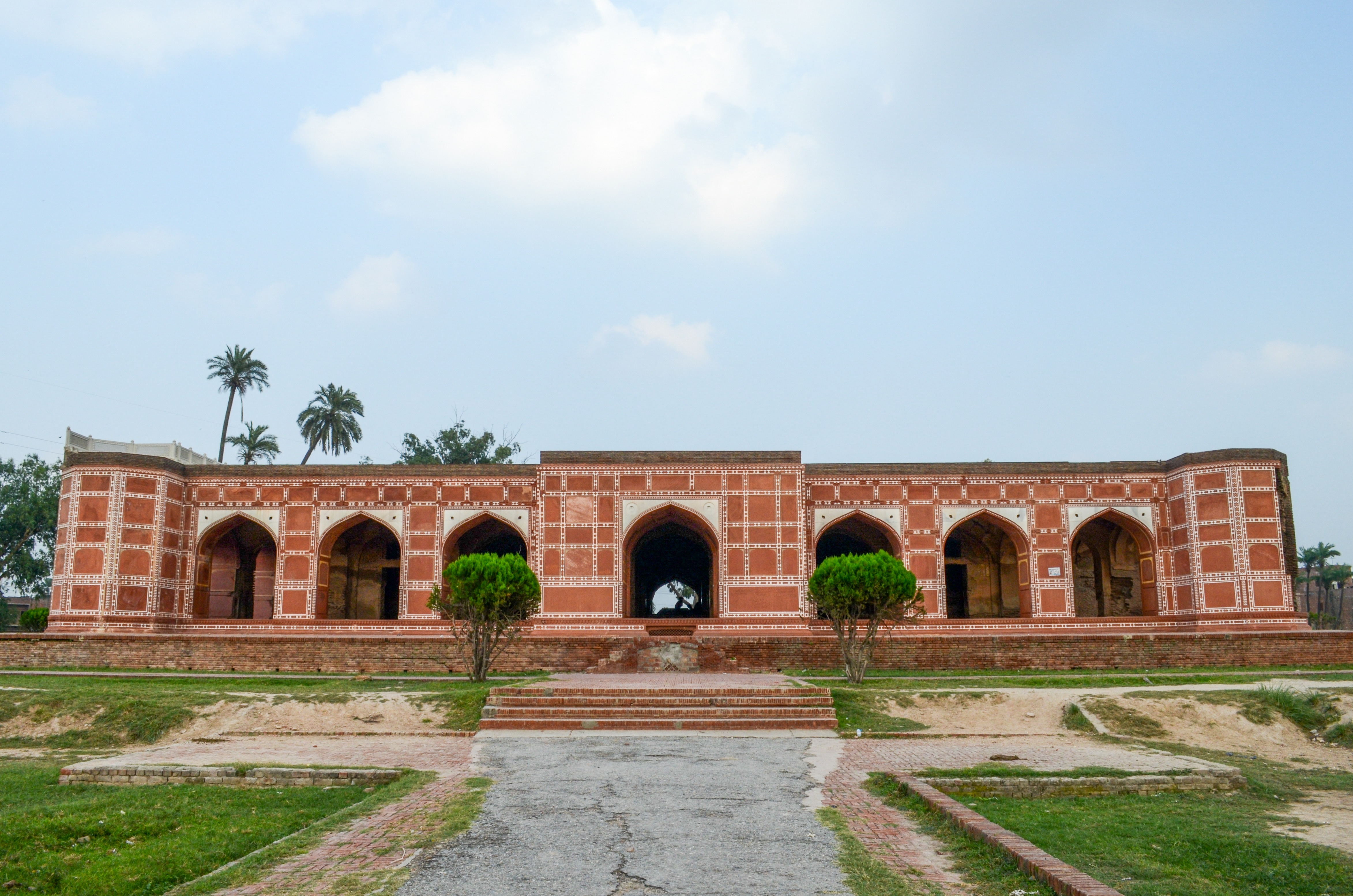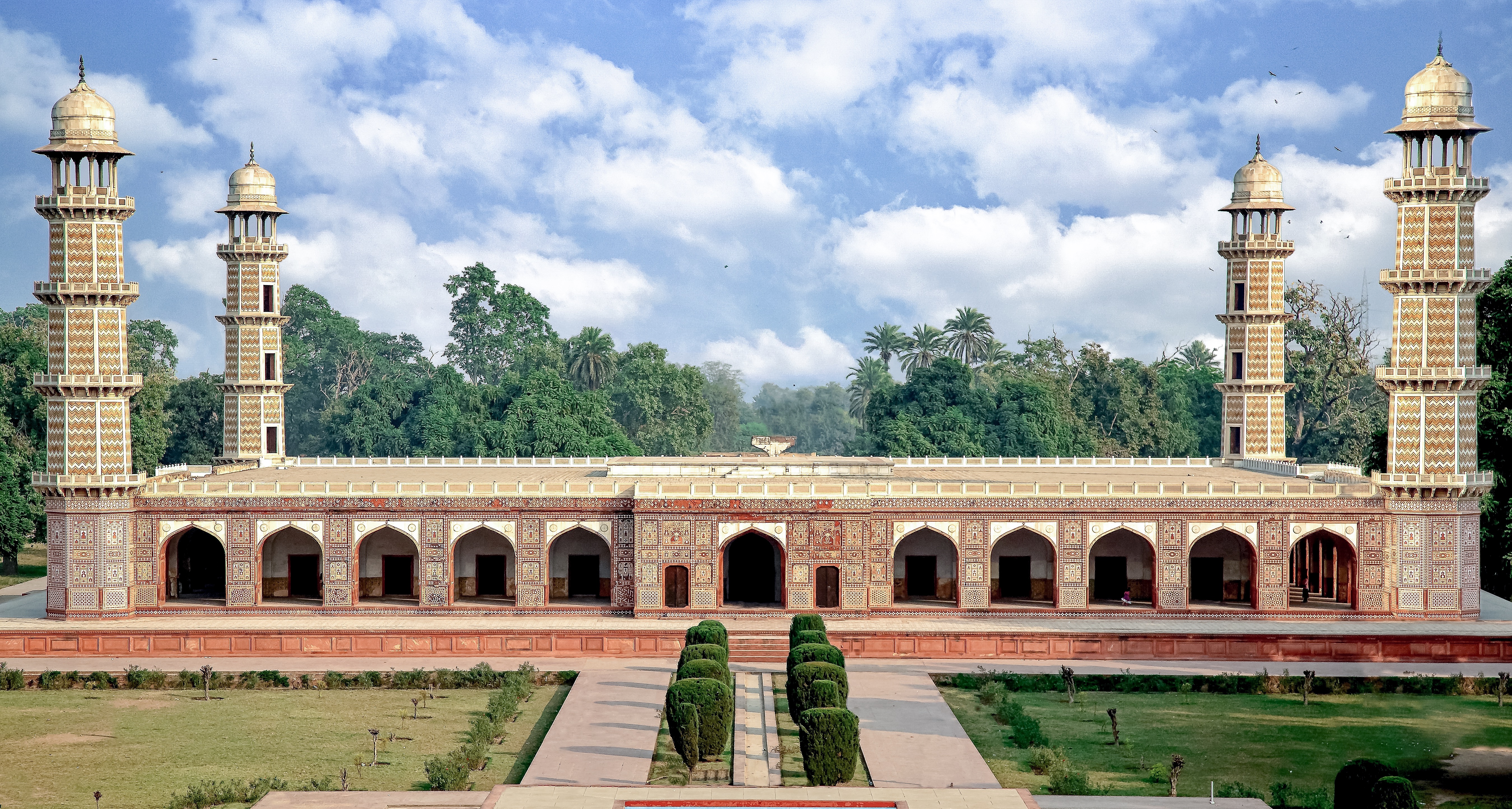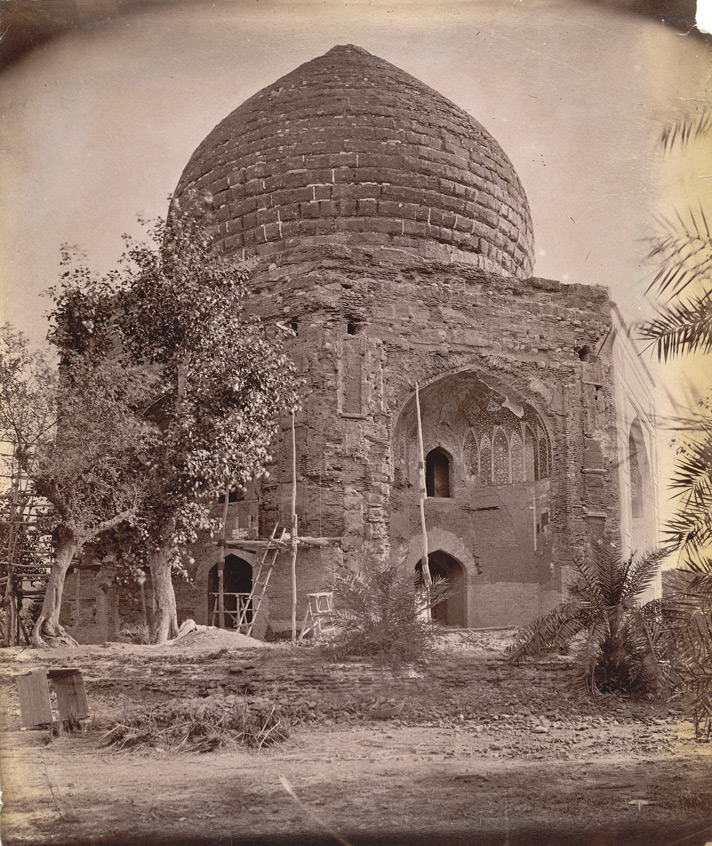|
List Of Places In Lahore
Lahore remains a major tourist destination in Pakistan. The Walled City of Lahore was renovated in 2014 and is popular due to the presence of two recognized UNESCO World Heritage Sites. Among the most popular sights are the Lahore Fort, adjacent to the Walled City, and home to the Sheesh Mahal, the Alamgiri Gate, the Naulakha pavilion, and the Moti Masjid. The fort along with the Shalimar Gardens has been a UNESCO World Heritage Site since 1981. The city is home to several ancient religious sites including prominent Hindu temples, the Krishna Temple and Valmiki Mandir. The Samadhi of Ranjit Singh, also located near the Walled City, houses the funerary urns of the Sikh ruler Maharaja Ranjit Singh. The most prominent religious building is the Badshahi Mosque, constructed in 1673; it was the largest mosque in the world upon construction. Another popular sight is the Wazir Khan Mosque, known for its extensive ''faience'' tile work and constructed in 1635. Old city of Lahore is k ... [...More Info...] [...Related Items...] OR: [Wikipedia] [Google] [Baidu] |
Walled City Of Lahore
The Walled City of Lahore (Punjabi language, Punjabi & ur, , ''"Inner City"''), also known as Old City, forms the historic core of Lahore, Pakistan. The city was established around 1000 CE in the western half of the Walled City, which was fortified by a mud wall during the medieval era. The Walled City rose in prominence after being selected as the Mughal capital, which resulted in construction of the Lahore Fort – now a UNESCO World Heritage Site, as well as the city's new reinforced walls. The Walled City was bestowed with numerous monuments during the Mughal era, with some of Lahore's most iconic structures being located in the Walled City, such as the lavishly decorated Wazir Khan Mosque, the massive Badshahi Mosque, and the Shahi Hammam. Under Sikh rule, the city was again selected as capital, and the Walled City again rose in prominence with numerous religious buildings built in the Walled City at the time, including the Samadhi of Ranjit Singh, and the Gurdwara Janam ... [...More Info...] [...Related Items...] OR: [Wikipedia] [Google] [Baidu] |
Data Durbar Complex
Data Darbar (also spelt Data Durbar; ), located in the city of Lahore (Punjab, Pakistan), is the largest Sufi shrine in South Asia. It was built to house the remains of Ali Hujwiri, commonly known as ''Data Ganj Baksh'', a Sufi saint from Ghazni in present-day Afghanistan, who is believed to have lived on the site in the 11th century CE. The site is considered to be the most sacred place in Lahore, and attracts up to one million visitors to its annual ''urs'' festival. Location Data Darbar is located in the centre of Old City Lahore. Surrounding it are Lower Mall Road, Bhati Gate, Gawalmandi & Karbala Gamay Shah. History The shrine was originally established as a simple grave next to the mosque which Ali Hujwiri had built on the outskirts of Lahore in the 11th century. By the 13th century, the belief that the spiritual powers of great Sufi saints were attached to their burial sites was widespread in the Muslim world, and so a larger shrine was built to commemorate the burial ... [...More Info...] [...Related Items...] OR: [Wikipedia] [Google] [Baidu] |
Gora Kabristan, Lahore
The Gora Kabristan or Gora Cemetery ( Punjabi/Urdu: ) in Lahore, Pakistan is the one of the oldest Christian cemetery in Lahore. Location It is located adjutant to Forman Christian College. History It was developed after establishment of British Raj in the Punjab Region as their primary Cemetery in Lahore. The name literally means the white graveyard. 'Gora' is an Urdu word and is used by Pakistanis to refer to light skinned or white people. Therefore, a more accurate translation would be "white people's graveyard." The term is not always necessarily used in a derogatory manner. Notable interments Many notable personalities of British era and early Pakistani era are buried there, including * Cecil Chaudhry * Geoffrey Langlands * Princess Bamba Sutherland * A.C. Woolner * Alvin Robert Cornelius Alvin Robert Cornelius, HPk (8 May 1903 – 21 December 1991) was a Pakistani jurist, legal philosopher and judge, serving as the 4th Chief Justice of Pakistan from 1960 until 196 ... [...More Info...] [...Related Items...] OR: [Wikipedia] [Google] [Baidu] |
Ahmed Ali Lahori
Ahmed Ali Lahori (1887 – 23 February 1962) ( ur, ) was a Pakistani Sunni Muslim scholar and Quran interpreter.Profile of Ahmed Ali Lahori on google.com website retrieved 2 May 2017 His students include . Early life and career Ahmed Ali Lahori was a student of .[...More Info...] [...Related Items...] OR: [Wikipedia] [Google] [Baidu] |
Malik Ayaz
Malik Ayaz (Persian: ملک ایاز), son of Aymāq Abu'n-Najm, was a slave from Georgia who rose to the rank of officer and general in the army of Sultan Mahmud of Ghazni (also known as ''Mahmud Ghaznavi)''. Malik Ayaz's slave-general of Mahmud inspired poems and stories, and the Muslim historians and Sufis commemorate Malik Ayaz due to his unwavering feudalistic loyalty to Mahmud Ghaznavi. Early life and feudal career In 1021, the Sultan Mahmud Ghaznavi raised Ayaz to kingship, awarding him the throne of Lahore, which the Sultan had taken after a long siege and a fierce battle in which the city was torched and depopulated. As the first Muslim governor of Lahore, he rebuilt and repopulated the city. He also added many important features, such as a masonry fort, which he built in the period of 1037–1040 on the ruins of the previous one, demolished in the fighting, and city gates (as recorded by Munshi Sujan Rae Bhandari, author of the ''Khulasatut Tawarikh'' (1596 C.E.). The pr ... [...More Info...] [...Related Items...] OR: [Wikipedia] [Google] [Baidu] |
Qutubuddin Aibak
Qutb ud-Din Aibak ( fa, قطبالدین ایبک), (1150 – 14 November 1210) was a Turkic general of the Ghurid king Muhammad Ghori. He was in charge of the Ghurid territories in northern India, and after Muhammad Ghori's assassination in 1206, he established the Delhi Sultanate (1206–1526), and started the Mamluk dynasty, which would rule the Sultanate until 1290. A native of Turkestan, Aibak was sold into slavery as a child. He was purchased by a Qazi at Nishapur in Persia, where he learned archery and horse-riding among other skills. He was subsequently resold to Muhammad Ghori in Ghazni, where he rose to the position of the officer of the royal stables. During the Khwarazmian-Ghurid wars, he was captured by the scouts of Sultan Shah; after the Ghurid victory, he was released and highly favoured by Muhammad Ghori. After the Ghurid victory in the Second Battle of Tarain in 1192, Muhammad Ghori made Aibak in charge of his Indian territories. Aibak expanded the Ghur ... [...More Info...] [...Related Items...] OR: [Wikipedia] [Google] [Baidu] |
Tomb Of Nur Jahan
The Tomb of Nur Jahan ( ur, ) is a 17th-century mausoleum in Lahore, Pakistan, that was built for the Mughal empress Nur Jahan. The tomb's marble was plundered during the Sikh era in 18th century for use at the Golden Temple in Amritsar. The red sandstone mausoleum, along with the nearby tomb of Jahangir, tomb of Asif Khan, and Akbari Sarai, forms part of an ensemble of Mughal monuments in Lahore's Shahdara Bagh. Location The mausoleum is located in Shahdara Bagh, across the River Ravi from Lahore. The tomb is part of an ensemble of nearby monuments, including the Tomb of Jahangir, Akbari Sarai, as well as the tomb of Asif Khan. Nur Jahan's tomb was separated from the other monuments by open fields, which were later interrupted by construction of the Lahore-Peshawar Railway Line during the British era. Background Mehr-un-Nissa, bestowed with the title ''Nur Jahan'', meaning "Light of the World," was the fourth child of Asmat Begum and her husband Mirza Ghiyas Beg, who ... [...More Info...] [...Related Items...] OR: [Wikipedia] [Google] [Baidu] |
Tomb Of Muhammad Iqbal
The Tomb of Allama Iqbal, or Mazaar-e-Iqbal ( ur, ) is a mausoleum located within the Hazuri Bagh, in the Pakistani city of Lahore, capital of Punjab province. Background Iqbal was one of the major inspirations behind the Pakistan Movement, and is revered in Pakistan as ''Muffakir-e-Pakistan'' (The Thinker of Pakistan) or ''Shair-e-Mashriq'' (The Poet of the East). Iqbal died on 21 April 1938 in Lahore at the age of 60. Thousands of visitors come to the mausoleum every day to pay their respects to the poet-philosopher. It is said that Mustafa Kemal Atatürk sent earth collected from Maulana Rumi's tomb to be sprinkled on this grave History Soon after Iqbal's death in April 1938, a committee was formed that was presided over by Chaudhary Mohammed Hussain. A major problem in the realisation of this monument was a lack adequate funds. The committee resolved not to accept any donations from the local governments and state rulers, and so funds were raised through the contribution ... [...More Info...] [...Related Items...] OR: [Wikipedia] [Google] [Baidu] |
Tomb Of Jahangir
The Tomb of Jahangir ( ur, ) is a 17th-century mausoleum built for the Mughal Emperor Jahangir. The mausoleum dates from 1637, and is located in Shahdara Bagh near city of Lahore, Pakistan, along the banks of the Ravi River. The site is famous for its interiors that are extensively embellished with frescoes and marble, and its exterior that is richly decorated with ''pietra dura''. The tomb, along with the adjacent Akbari Sarai and the Tomb of Asif Khan, are part of an ensemble currently on the tentative list for UNESCO World Heritage status. Location The tomb is located in Shahdara Bagh, northwest of the Walled City of Lahore. The tomb is located across the River Ravi from Lahore, in what was a rural area known for its numerous pleasure gardens. The tomb is located in Jahangir's pleasure garden, the ''Dilkusha'' Garden, which had been laid out in 1557. The Tomb of Asif Khan, built-in 1645, and the Akbari Sarai, built-in 1637, are located immediately west of Jahangir's tomb co ... [...More Info...] [...Related Items...] OR: [Wikipedia] [Google] [Baidu] |
Tomb Of Asif Khan
The Tomb of Asif Khan ( ur, ) is a 17th-century mausoleum located in Shahdara Bagh, in the city of Lahore, Punjab. It was built for the Mughal statesman Mirza Abul Hassan Jah, who was titled ''Asif Khan''. Asif Khan was brother of Nur Jahan, and brother-in-law to the Mughal Emperor Jahangir. Asif Khan's tomb is located adjacent to the Tomb of Jahangir, and near the Tomb of Nur Jahan. Asif Khan's tomb was built in a Central Asian architectural style, and stands in the centre of a Persian-style Charbagh garden. Background Asif Khan was the brother of Empress Nur Jahan, and father of Arjumand Bano Begum, who became the consort of Shah Jahan under the name Mumtaz Mahal. In 1636, he was elevated as ''Khan-e-Khana'' and commander-in-chief and a year later became the governor of Lahore. Asif Khan died on 12 June 1641 in a battle against the forces of rebel Raja Jagat Singh. His tomb was commissioned to be built in the Shahdara Bagh tomb complex in Lahore by Shah Jahan. History Em ... [...More Info...] [...Related Items...] OR: [Wikipedia] [Google] [Baidu] |
Bibi Pak Daman
Bibi Pak Daman ( ur, بی بی پاکدامن ') is the mausoleum of Ruqayyah bint Ali located in Lahore, Punjab, Pakistan. Legend has it that it holds the graves of six ladies from Muhammad's household (Ahl Al-Bayt). Ruqayyah bint Ali ibn Abu Talib was the daughter of Muhammad's cousin and son-in-law Ali ibn Abu Talib. Ruqayah bint Ali was the sister of Al-Abbas ibn Ali and also the wife of Muslim ibn Aqeel (emissary of third Shi'a Imam Husayn ibn Ali to Kufah). Others are said to be Muslim ibn Aqil's sister and daughters. It is said that these ladies came here after the event of the battle of Karbala on the 10th day of the month of Muharram in 61 AH (October 10, AD 680). Bibi Pak Daman, which means the "chaste lady", is the collective name of the six ladies believed to interred at this mausoleum, though it is also (mistakenly) popularly used to refer to the personage of Ruqayyah bint Ali alone. They were among the women who brought Islam to South Asia, preaching and engaging in mi ... [...More Info...] [...Related Items...] OR: [Wikipedia] [Google] [Baidu] |
Madho Lal Hussain
Shah Hussain ( pa, ; ; 1538–1599), also known as Madhoo Lal Hussain, was a 16th-century Punjabi Muslim Sufi poet who is regarded as a pioneer of the Kafi form of Punjabi poetry. He lived during the ruling periods of Mughal emperors Akbar and his son Jahangir. Name Shah Hussain is also often known as Shah Hussain Faqir - ''Faqir'' meaning ''Dervish'' (mendicant) and ''Shah'' means ''King''. So due to his extremely humble Sufi personality, people called him ''The Dervish King'', a person who was a King and a Dervish at the same time. He was born in 945 AH (1538) within the Walled City of Lahore in what is now Punjab, Pakistan. His father was Sheikh Usman, he was a Dhudhi Rajput (a clan of Rajput), and by occupation, he was a weaver (in some of Shah Hussain poetic rhymes he used his pen name as Faqir Hussain Julaha which means "Saint Hussain the weaver"), his father, in his early age, enrolled him in a local school where he started to memorize the Quran. His teacher was Haf ... [...More Info...] [...Related Items...] OR: [Wikipedia] [Google] [Baidu] |
.jpg)
.jpg)


